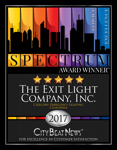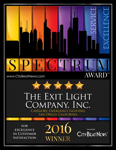You see them on every piece of electronics you buy — whether for personal use, business, or work. But what does that stamped UL, ETL, or CSA indicate? These are Certification Marks, and they provide assurance that you can rely on a standard of safety and performance from the products. All products sold in the United States must pass through a battery of tests performed by a Nationally Recognized Testing Laboratory (NRTL) to prove that the product meets or exceeds national safety standards. Products that pass this inspection and testing process carry the Certification Mark for the laboratory that provided the testing (UL for Underwriter’s Laboratories, ETL for Intertek Testing Services, and CSA for Canadian Standards Association). It doesn’t matter which mark the product carries, as long as it is from one of the organizations that are recognized by the Occupational Safety & Health Administration (OSHA).
You can be assured that all products which carry an OSHA recognized NRTL mark will comply with the various safety codes (buidling codes, electrical safety codes, municipal codes and fire codes), has been thoroughly tested by third party laboratories to strict specifications, and complies with all current standards.
All emergency lighting and exit signs sold by The Exit Light Company carry Certification Marks. Please see our FAQs to learn more about Certification Marks and NRTLs.



